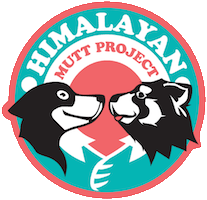DOG EAT DOG
- torvaanser
- Jun 16, 2014
- 3 min read

Dogs injure wildlife, livestock, and other dogs too. HMP treated several dogs for wounds from fights during our 2014 neutering and vaccination camp.
It is not easy to be a dog in the Himalaya. Even if you have an owner to look after you, it doesn’t take much for your life to hit a downward spiral. Simple wounds that could easily be treated in the city, become life threatening afflictions that mean certain death or permanent disability. The brown dog above was likely the aggressor in its last fight that left its right eyelid torn open. If our medical team had not showed up in Ngawal, its eye would have simply rotted away. This dog was given a second chance. It would have been abandoned because no one wants to keep a dog with a festering eye. Moreover, it was becoming more aggressive because of the pain and discomfort from its untreated wound. Both owner and dog are helpless to the situation.

The dogs don’t mean to hurt each other. They can’t help themselves. When dogs are not neutered, they develop a strong territorial instinct and have the aggression to back it up. They also fight to defend or earn their mates. They even fight with other animals like cats, and wild animals like musk deer. Occasionally, even livestock gets caught between dogfights. Every time a dog fights, it risks injuring itself and the dog it attacks. Above: A cat in Manang gets treated for a leg wound from a dog fight.

When dogs attack livestock, that’s when the dogs really get into trouble. Livestock is precious to Manang’s agrarian community. When livestock is lost to dogs, villagers become motivated to get rid of the dogs, and this includes both street dogs, as well as dogs with owners. Poisons mixed with food are left along the trail, and this approach kills indiscriminately. Any animal that eats the food will die a slow and painful death. The most common form of poison is Strychnine, a pesticide that when consumed causes muscular convulsions and eventually death through suffocation. Above: A goat with a splint for its broken leg after it got attacked by a dog.

Each time a dog engages in a fight there is potential for disease transmission. While dogs rarely attack people, it is common for frenzied dogs to accidentally injure people while trying to chase and attack other dogs. Many of the dogs that visited our camp had scars and wounds from dog fights. Neutering is proven to significantly reduce aggression toward other dogs, and reduce roaming behaviour, hence reducing interaction between dogs and wildlife, and curbing the potential for disease spread. Because there is no permanent medical facility for either dogs or people in the Himalaya, sterilisation to reduce injuries from dog fights, means preventing infections or even death from wounds that are left untreated.

The dog above ran into a group of trekkers that happened to have a doctor in their group. The trekkers noticed this street dog with a gaping wound on its back and after asking around, realised it didn’t belong to anyone. Locals said it got caught in a dog attack and the wound was getting worse. Chimmi Gurung, from the Himalayan settlement of Gyaru, sent us this photo. He says, “It smelled foul, and the dog was lying on the street, not moving. The wound was small but deep and there were maggots.” With an ordinary stationary scissors, and medicines in their lean first-aid kit, the doctor attempted to clean the wound, remove the maggots, and disinfect the site. We did not see this street dog during our camp. It is not known if it survived this injury.
































Comments